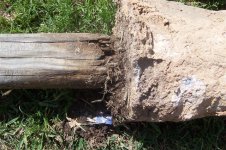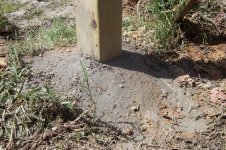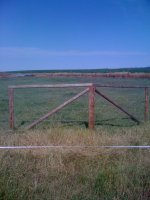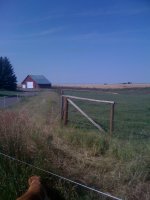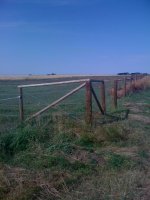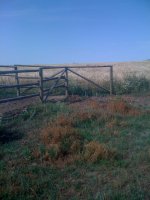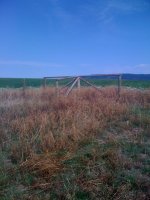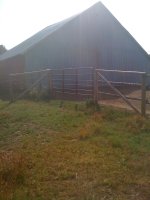EddieWalker
Epic Contributor
Can someone please explain the difference? In Ohio it is recommended that the posts be set in concrete. In Texas the posts rot out if set in concrete.
When I do a fence, it really depends on the soil conditions where I'm working. If it's sandy, or loose soil, then I have to use concrete. If it's good, red clay, then I'll tamp them in.
Here is a picture of a residential post that I replaced. It was sandy soil, and the previous fence builder just dumped the concrete in the hole, and let them set. They lasted five years like this.
The thing that I do differently when I use concrete is I build up the concrete so it's above grad and angles up the sides of the posts. After it's dried, the concrete forms a ramp of sorts to shed the water away from the post.
In my experience, pressure treated posts will almost never rot in the ground, but always rot at grade. The water sits there, keeping the post wet, and after awhile, cylce of being wet and then dry again will break down the wood.
Eddie
